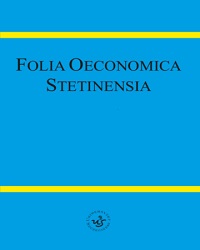Econometric Analysis of the Relationship Between Innovation and Foreign Trade Distance in Central and Eastern Europe Countries
Econometric Analysis of the Relationship Between Innovation and Foreign Trade Distance in Central and Eastern Europe Countries
Author(s): Marcin SalamagaSubject(s): Supranational / Global Economy, Economic policy, International relations/trade, Economic development
Published by: Wydawnictwo Naukowe Uniwersytetu Szczecińskiego
Keywords: export competitiveness; innovation gap; panel data model; technological gap theory;
Summary/Abstract: Research background: Posner’s technology gap theories and Vernon’s product life cycle assume that differences in innovation and technology levels are the cause of foreign trade. These theories are subject to empirical verification. To date, however, the analysis of the impact of innovation distance on a country’s export competitiveness is omitted. This article tries to fill this research gap. The author attempts to examine the relationship between the innovation gap and export competitiveness in industries with varying levels of technological advancement. Purpose: The aim of the article is to research the direction and strength of the impact of the innovation gap on export competitiveness in 10 different industries in Central and Eastern Europe countries (CEECs). Research methodology: Dynamic panel models were used in the research, which describe the impact of the technological gap on the export competitiveness of countries. To measure innovation, the indicator of innovative comparative advantage was constructed and based on the number of patents used. The technological gap in individual countries was calculated as the Euclidean distance indicators of the innovative advantage in a given country from other countries. Results: In light of the presented results of the study, it can be concluded that innovation generally has a significant and positive impact on the competitiveness of exports in the high and medium-high technology industries of the CEECs, while it does not significantly affect the competitiveness of trade in low technology industries. In addition, the Visegrad countries in the high and medium-high technology industries generally have a low technological gap and a smaller distance in export competitiveness using the dynamic panel data model. Novelty: The added value of this article is an innovative study on the impact of the technological gap on export competitiveness with the example of the CEECs using the dynamic panel data model.
Journal: Folia Oeconomica Stetinensia
- Issue Year: 20/2020
- Issue No: 1
- Page Range: 360-372
- Page Count: 13
- Language: English

